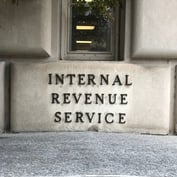Question: An employee stock ownership plan can (a) assure a retiring business owner a fair market for the sale of his or her firm; (b) ease the purchase of a business and defer tax on corporate earnings through special provisions in the IRS code; (c) give employees a vested stake in a firm’s future by providing for their retirement security; (d) avail advisors of multiple life insurance sales opportunities; or (e) all of the above.
If you answered (e), you get an “A”. An ESOP, a tax-qualified retirement plan that lets employee-owners accumulate shares of a company as part of their compensation, is fast becoming a favored vehicle among business owners for securing retirement money on tax-advantaged basis and for transitioning control of their firms to key employees or family members, say experts.
That’s good news because, in addition to the advantages they offer sellers and new owner-employees, ESOPs can yield benefits for the economy–even in bad times.
According to a 2010 study conducted by Georgetown Univers ity’s McDonough School of Business, Subchapter S-corporations with ESOPs (S-ESOPs), the most prevalent private business entity, enjoyed a 2% rise in employment in 2008 while U.S. private employment fell by nearly 3% over the same time period. These firms grew wages by nearly 6% while U.S. earnings per worker rose only half as much; and they boosted retirement account contributions by more than 18%, compared to 2.8% for all U.S. firms.
ity’s McDonough School of Business, Subchapter S-corporations with ESOPs (S-ESOPs), the most prevalent private business entity, enjoyed a 2% rise in employment in 2008 while U.S. private employment fell by nearly 3% over the same time period. These firms grew wages by nearly 6% while U.S. earnings per worker rose only half as much; and they boosted retirement account contributions by more than 18%, compared to 2.8% for all U.S. firms.
The S-ESOP’s impressive track record was a chief selling point underpinning a lobbying effort on Capitol Hill earlier this month to enact the S-Corporation ESOP Promotion and Expansion Act (S. 3803). Among other provisions, the bill would extend to S-ESOPs owners a tax benefit now enjoyed only by C-corp. sellers: the ability to invest sale proceeds in other securities and, thus, defer capital gains tax.
“We’re seeing a very high level of interest in ESOPs,” says Kelly Finnell, president of Executive Financial Services, Memphis, Tenn. “A PricewaterhouseCooper study showing a 250% growth in ESOP transactions from 2007 to 2009 just about perfectly matches our own experience.”
A key factor behind the growing demand among business owners for using an ESOP as a succession plan, sources say, is demographics: a first wave of 79-plus million baby boomers are now edging toward retirement. Each morning, more than 8,000 boomers–among them business owners looking for an exit strategy–wake up to their 60th birthday.
Also fueling the upsurge is a still-difficult credit market for third-party acquisitions. In the wake of the 2007-2009 recession, observers note, financial institutions remain wary of extending business loans. ESOP transactions, too, experienced a lull during the downturn because of depressed valuations for firms and because business owners were more focused on surviving the crash. But with the economy now in recovery, ESOP transactions are back on a growth path.
Underpinning the ESOP’s growing appeal are tax benefits–a consideration that will take on added importance in 2011, sources point out, given the pending rise in income and capital gains tax rates; and, absent Congressional action, the expiration of tax cuts enacted under President George W. Bush in 2001 and 2003.
“Almost everyone expects tax rates to go up–significantly–making the tax benefits that much more valuable,” says Finnell.
Beyond offering the ability to defer tax on capital gains (an option available to C-corp. owners who sell 30% or more of their shares in the business) and deduct dividends paid on ESOP-held stock, ESOPs also let participating employees avoid tax on the stock allocated to their accounts or on earnings until distributed–generally at death, disability, retirement or termination of service (subject to vesting).
Companies that sponsor ESOPs also are able to deduct ESOP contributions (subject to certain limitations). That allows them to convert what would otherwise be a non-tax-deductible principal payment on a loan into a tax-deductible plan contribution.
The latter benefit is a key consideration for key employees who will manage the business and who may, as an alternative to an ESOP, entertain buying the company without the participation of lower-ranking employees.
In a study commissioned by the Oakland, Calif.-based National Center for Employee Ownership, which compared an ESOP to a key executive acquisition of a firm with 100 employees and five principals, the ESOP comes out a clear winner, according to National Center Founder Cory Rosen, “When you figure in the pre-tax versus after-tax benefits of a sale, executives are better off being a participant in the ESOP than they are buying the company outright,” he says. “The ESOP is vastly superior for tax reasons as a transition vehicle.”








 October 10, 2010 at 08:00 PM
October 10, 2010 at 08:00 PM










